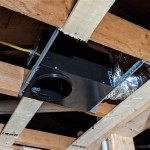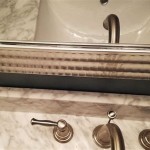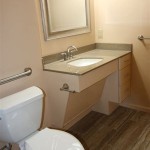Delta Bathroom Sink Handle Repair: A Comprehensive Guide
A malfunctioning bathroom sink handle can disrupt daily routines and lead to unnecessary water wastage. Delta faucets, known for their durability and design, are not immune to wear and tear. This article provides a detailed guide to repairing Delta bathroom sink handles, covering common issues, necessary tools, and step-by-step instructions for various repair procedures. Understanding the anatomy of a Delta faucet and identifying the specific problem are crucial first steps in ensuring a successful repair.
Delta faucets typically consist of several components, including the handle, handle base, cartridge or ball valve, O-rings, and spout. The handle controls the flow and temperature of the water. The cartridge or ball valve regulates the water flow from the hot and cold supply lines. O-rings create watertight seals between various parts, preventing leaks. Familiarizing oneself with these components is essential for diagnosing the source of the problem and undertaking the appropriate repair.
Common problems with Delta bathroom sink handles include leaks, difficulty turning the handle, loose handles, and dripping faucets. Leaks often originate from worn-out O-rings or damaged cartridges. Difficulty turning the handle might indicate a build-up of mineral deposits or a corroded cartridge. A loose handle could be due to a stripped screw or a worn handle adapter. Dripping faucets are frequently caused by a faulty cartridge or ball valve. Each of these problems requires a different approach to repair.
Tools and Materials Required for Delta Bathroom Sink Handle Repair
Before commencing any repair work, gathering the necessary tools and materials is essential for efficiency and safety. The following list outlines the essential items needed for most Delta bathroom sink handle repairs:
- Adjustable Wrench: For loosening and tightening various nuts and fittings. Choose one that is appropriately sized for plumbing fixtures.
- Screwdrivers (Phillips and Flathead): To remove and tighten screws securing the handle, base, and other components. Ensure you have various sizes to accommodate different screw types.
- Allen Wrench Set: Many Delta handles are secured with Allen screws, requiring a set of Allen wrenches for removal.
- Penetrating Oil: To loosen corroded or stuck screws and fittings. Applying penetrating oil a few minutes before attempting to remove stubborn parts can prove beneficial.
- Replacement Parts: This includes cartridges, O-rings, screws, and handle adapters, depending on the identified problem. Purchase genuine Delta replacement parts for optimal compatibility and performance.
- Plumber's Grease: To lubricate O-rings and cartridges during reassembly, ensuring smooth operation and preventing premature wear.
- Clean Rags or Towels: To clean up spills and protect the sink surface from scratches.
- Basin Wrench (Optional): If the faucet needs to be removed from the sink for more extensive repairs, a basin wrench will facilitate the removal of the supply lines.
- Valve Seat Wrench (Optional): For some older Delta faucet models with separate valve seats, a valve seat wrench may be needed to remove and replace these components.
- Safety Glasses: To protect eyes from debris and splashes during the repair process.
Having these tools and materials readily available will streamline the repair process and minimize disruptions.
Repairing a Leaky Delta Bathroom Sink Handle
A leaky Delta bathroom sink handle is a common problem often attributable to worn-out O-rings or a faulty cartridge. Replacing these components is usually a straightforward process.
Step 1: Shut Off the Water Supply: Locate the shut-off valves under the sink and turn them clockwise to shut off the hot and cold water supply. If shut-off valves are not present, turn off the main water supply to the house.
Step 2: Remove the Handle: Identify the screw securing the handle to the faucet body. This could be a Phillips head, flathead, or Allen screw. Use the appropriate screwdriver or Allen wrench to loosen and remove the screw. Carefully pull the handle off the faucet. Some handles may require a slight rocking motion to dislodge them.
Step 3: Remove the Handle Base or Escutcheon: Depending on the faucet model, there may be a handle base or escutcheon that needs to be removed. This is typically held in place by screws or a retaining nut. Loosen and remove these fasteners to expose the cartridge or ball valve.
Step 4: Remove the Cartridge or Ball Valve: For cartridge-style faucets, use pliers to grip the cartridge stem and gently pull it straight out. Some cartridges may be secured with a retaining clip; ensure this clip is removed before attempting to pull out the cartridge. For ball valve faucets, use a specialized wrench or tool (often included with the faucet) to loosen and remove the ball valve assembly.
Step 5: Inspect and Replace O-Rings (if applicable): If O-rings are present on the cartridge or ball valve, inspect them for signs of wear, cracking, or damage. Use a small pick or screwdriver to carefully remove the old O-rings and replace them with new ones. Apply a thin layer of plumber's grease to the new O-rings before reassembling.
Step 6: Install the New Cartridge or Ball Valve: Insert the new cartridge or ball valve into the faucet body, ensuring it is properly aligned. If applicable, reattach the retaining clip to secure the cartridge. For ball valve faucets, tighten the retaining nut or tool to secure the ball valve assembly.
Step 7: Reassemble the Faucet: Replace the handle base or escutcheon, securing it with the screws or retaining nut. Reattach the handle and tighten the securing screw. Ensure the handle operates smoothly and without resistance.
Step 8: Turn on the Water Supply and Test for Leaks: Slowly turn on the shut-off valves under the sink and check for leaks around the handle base and spout. If leaks are present, tighten the fasteners or double-check the installation of the cartridge or O-rings.
Repairing a Loose Delta Bathroom Sink Handle
A loose Delta bathroom sink handle can be both annoying and indicative of a more significant underlying issue. Often, the problem stems from a stripped screw, worn handle adapter, or loose handle base.
Step 1: Inspect the Handle Screw: Carefully examine the screw that secures the handle to the faucet stem. If the threads on the screw are stripped, the screw will not tighten properly. Replace the stripped screw with a new screw of the same size and thread type. Genuine Delta replacement screws are recommended.
Step 2: Check the Handle Adapter: Some Delta faucets utilize a handle adapter that connects the handle to the faucet stem. If this adapter is worn or damaged, the handle may feel loose. Inspect the adapter for cracks or signs of wear. If the adapter is damaged, replace it with a new Delta handle adapter.
Step 3: Tighten the Handle Base: If neither the handle screw nor the adapter is the issue, the problem may lie with a loose handle base or escutcheon. Gently try to wiggle the base of the handle where it meets the sink. If it moves, proceed to tighten any screws or nuts that secure the base to the faucet body or sink. It might be necessary to access the underside of the sink to fully tighten these fasteners. Ensure these are snug, but not overtightened to avoid damage.
Step 4: Apply Thread Locker (Optional): If the screws or nuts repeatedly loosen, consider applying a small amount of thread locker (e.g., Loctite) to the threads before tightening. Thread locker will help prevent the fasteners from vibrating loose over time. Use a low-strength or medium-strength thread locker to allow for future disassembly if necessary.
Addressing a Stiff or Difficult-to-Turn Delta Bathroom Sink Handle
A Delta bathroom sink handle that is difficult to turn usually indicates a build-up of mineral deposits, corrosion, or a failing cartridge. Lubrication and cartridge replacement are the most common remedies.
Step 1: Apply Penetrating Oil: If the handle is only slightly stiff, try applying a small amount of penetrating oil to the base of the handle where it meets the faucet body. Allow the penetrating oil to soak in for several minutes to loosen any mineral deposits or corrosion. After soaking, try turning the handle again. The penetrating oil may temporarily improve the handle's movement, but a more thorough cleaning or replacement of parts may still be necessary.
Step 2: Remove and Clean the Cartridge: Follow the steps outlined previously for removing the handle, handle base, and cartridge. Once the cartridge is removed, inspect it for mineral deposits or corrosion. Use a soft cloth or brush to gently clean the cartridge. Avoid using abrasive cleaners, as these can damage the cartridge. Rinse the cartridge thoroughly with water and apply a thin layer of plumber's grease to the O-rings and moving parts before reinstalling.
Step 3: Replace the Cartridge: If cleaning and lubricating the cartridge does not resolve the stiffness, the cartridge may be worn out and require replacement. Purchase a new Delta cartridge compatible with your faucet model and install it following the steps outlined previously. A new cartridge will often eliminate stiffness and restore smooth handle operation.
Step 4: Consider Water Softener Installation: In areas with hard water, mineral deposits can accumulate rapidly and contribute to faucet problems. Installing a water softener can reduce the mineral content of the water and prolong the life of faucet components.
By systematically addressing these common problems and following the detailed instructions provided, homeowners can effectively repair Delta bathroom sink handles and maintain the functionality of their plumbing fixtures. Regular maintenance, such as cleaning and lubricating moving parts, can also help prevent future issues.

How To Fix Leaky Bathroom Handle Delta Faucet Model 4530 Series Hard Water

How To Rebuild A Delta Single Handle Faucet

Repair Parts For One And Two Handle Delta Bathroom Faucets

Simple Ways To Fix A Leaky Delta Bathroom Sink Faucet

Delta Faucet Repair Parts In 2024 Bathroom

How To Repair Leaking Dripping Delta Faucet Diyplumbing Serviceplumbing Tappplumbing

Simple Ways To Fix A Leaky Delta Bathroom Sink Faucet

How To Fix A Leaky Delta Two Handle Faucet

How To Replace A Two Handle Faucet Delta Blog

Delta Bathroom Faucet Repair Seats And Springs Serramar Hoa
Related Posts







